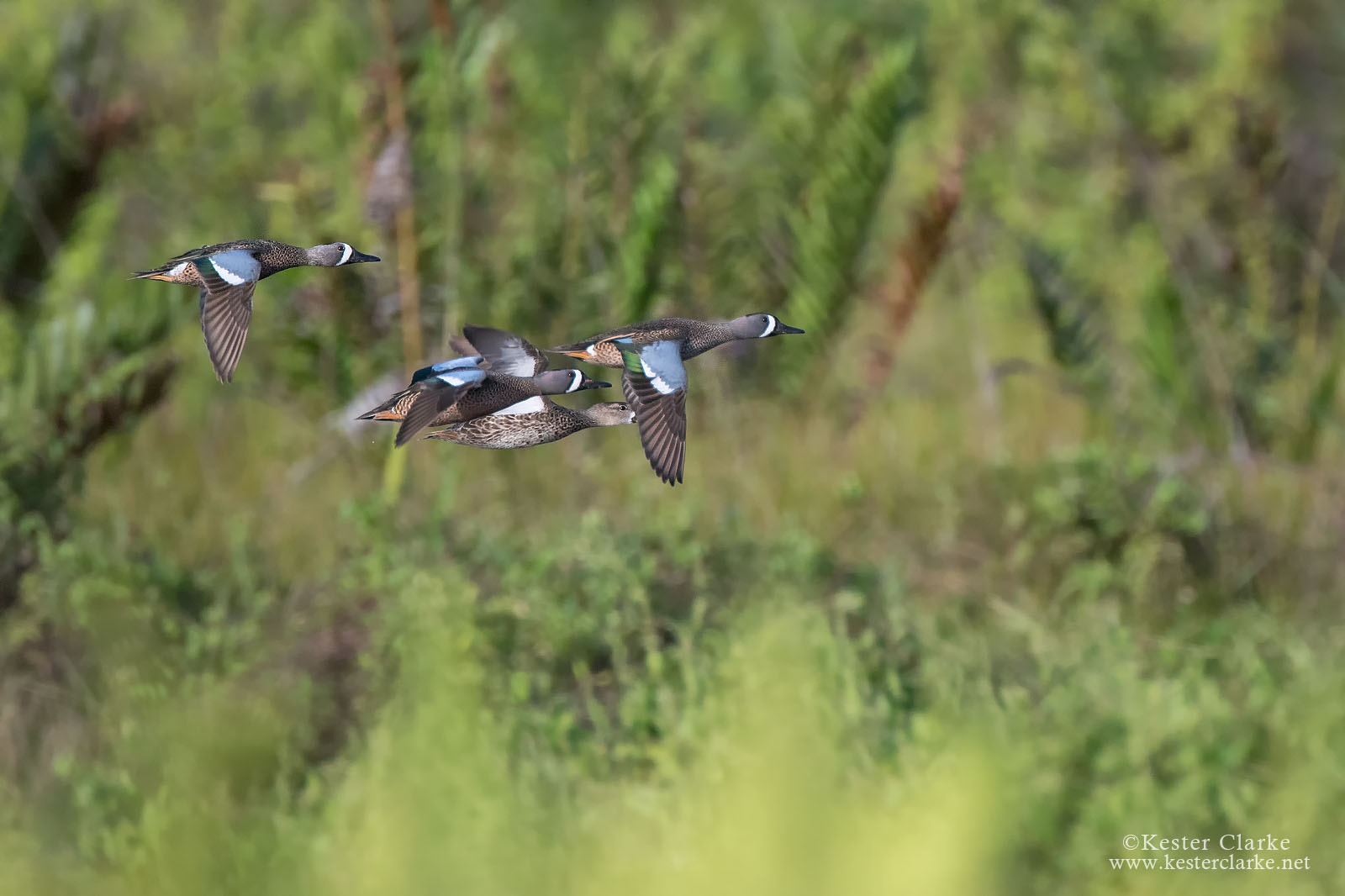The blue-winged teal (Anas discors) is a species of bird in the duck, goose, and swan family Anatidae. They are named blue-winged because there is a patch of blue on the forewings of both sexes. In flight, the Blue-winged Teal is swift, reaching speeds of up to 72 km/h (45 mph). Like other dabbling ducks, this species generally hops into the air directly from the water, without needing a running, flapping start. The blue-winged teal is a swift flyer.
They migrate to South America during the winter months to calm marshes and lakes where they feed on floating or submerged vegetation and small aquatic animals. The blue-winged teal is 40 cm (16 in) long, with a wingspan of 58 cm (23 in), and a weight of 370 g (13 oz). In the Wild, they have an average lifespan between 10-17 years, up to 23 years has been recorded. In Captivity, they usually live up to 10-17 years.
Description Of The Blue – Winged Teal
Male blue-winged teal have a slate gray head and neck, a black-edged white crescent in front of the eyes and a blackish crown. The breast and sides are tan with dark brown speckles and there is a white spot on the side of the rump. Most of the upper wing coverts are blue-gray, the secondaries form an iridescent green speculum and the underwing is whitish. The bill is black and the legs and feet are yellowish to orange. Female blue-winged teal have a brownish-gray head with a darker crown and eye stripe. The breast and sides are brown, the upper parts are olive brown, and the upper wing coverts are bluish, but less vibrant than the drake. The bill is gray-black and the legs and feet are dull yellow-brown. The female has a high-pitched squeak.
Habitat Of The Blue – Winged Teal
They are commonly found in northern prairies and parklands of central North America and spends winters from Central America and the Caribbean (Guyana) south to Peru and northeastern Brazil. Preferred nesting habitats include wetland areas within grasslands, such as marshes, ponds, and lakes. Winter habitats are mostly swamps and shallow wetlands.
Feeding Habits Of The Blue – Winged Teal
Blue-winged teal dabble to feed on the vegetative parts of aquatic plants (algae, duckweeds, pondweeds, etc.), seeds (sedges, pondweeds, grasses, etc.) and large amounts of aquatic invertebrates found in shallowly flooded wetlands.
Behavior Of The Blue – Winged Teal
Blue-winged Teal feed by dabbling—dipping their bill into the water, submerging their entire head, or tipping up to reach for prey or vegetation deeper underwater. They dive rarely. Like many ducks, teals have a range of exaggerated motions that they use as displays. Often male will make these displays while oriented to the side of the female he is courting. They include pumping the head up and down, dipping the head under water rapidly, and tipping up or dabbling in the water with body feathers raised. Females may respond by “inciting”: lowering her head, pointing her bill at the male, and then raising her head. Pair bonds typically dissolve during incubation, and adults form new pair bonds with different mates in the winter or spring.
Reproduction Of The Blue – Winged Teal
Blue-winged teal are among the last dabbling ducks to nest, generally nesting between April 15 and May 15. Few nests are started after mid-July. They generally lay 10 to 12 eggs. Delayed nesting and renesting efforts have substantially smaller clutches, averaging five to six eggs. Clutch size can also vary with the age of the hen. Yearlings tend to lay smaller clutches. Incubation takes 21 to 27 days. Blue-winged teal are sexually mature after their first winter. During incubation, the drake leaves its mate and moves to suitable molting cover where it becomes flightless for a period of 3 to 4 weeks. Blue-winged teal ducklings can walk to water within 12 hours after hatching but do not fledge until 6 to 7 weeks.
7 Interesting Facts About The Blue – Winged Teal
- The Blue-winged Teal is among the latest ducks to migrate northward in spring, and one of the first to migrate southward in fall.
- The Blue-winged Teal migrates over long distances. One individual banded in Alberta was shot in Venezuela a month later.
- The oldest recorded Blue-winged Teal was a male, and at least 23 years, 3 months old. He had been banded in Saskatchewan and was found in Cuba.
- Blue-winged Teals have the highest annual mortality rate (reaching 65%) of all the dabbling ducks; possibly as a result of hunting and long over-ocean migration.
- Their yellow legs are a distinction from other small ducks like Common Teal and Garganey. DNA analysis of this species has revealed its genetic make up to be almost identical to that of the Cinnamon teal.
- A group of teal has many collective nouns, including a “coil”, “dopping”, “knob”, “paddling”, and “spring” of teal.
- They are more vocal than most ducks, their high-pitched peeping and nasal quacking is commonly heard in spring and to a lesser extent in fall.
Blue – Winged Teal
The blue-winged teal is a species of bird in the duck, goose, and swan family Anatidae. They get their name “blue – winged” because of the patch of blue on the forewings of both sexes. These birds are swift flyers and are often found in wetlands and grasslands area. They feed on aquatic plants, seeds and invertebrates.
Article References:
- http://www.ducks.org/hunting/waterfowl-id/blue-winged-teal
- https://nature.mdc.mo.gov/discover-nature/field-guide/blue-winged-teal
- https://identify.whatbird.com/obj/407/overview/Blue-winged_Teal.aspx
- https://curiodyssey.org/animals/our-animals/birds/blue-winged-teal/
- https://en.wikipedia.org/wiki/Blue-winged_teal
- https://www.allaboutbirds.org/guide/Blue-winged_Teal/lifehistory
- Main Image: Kester Clarke | https://www.kesterclarke.net/







